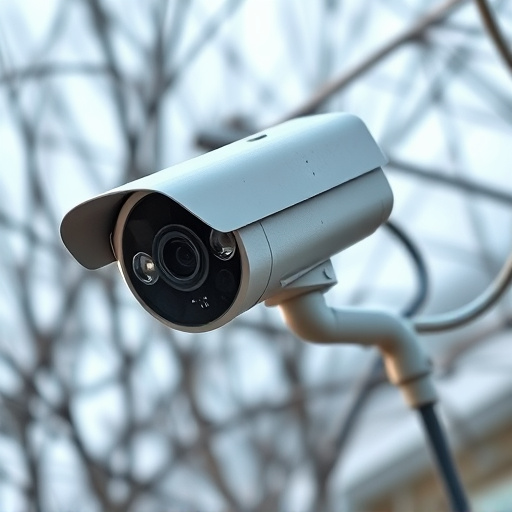Imitation security cameras, or fake cameras, are cost-effective deterrents designed to look like authentic surveillance equipment. Strategically placed in neighborhoods, they reduce criminal activity by making potential perpetrators believe their actions are being recorded and monitored. These devices foster a sense of unity among neighbors, encouraging watchfulness and collective responsibility for community safety. Types include dome and bullet cameras, best deployed in high-risk areas with clear signage. However, their use involves legal and ethical considerations, such as respecting privacy rights and local legislation.
In today’s digital era, imitation security cameras, or fake camers, are transforming neighborhood crime prevention. These innovative devices mimic real security systems, offering a cost-effective and discreet way to deter criminals without the hefty price tag. This article delves into the workings of these clever contraptions, exploring their benefits for community safety. We’ll discuss how different types and strategic placement can maximize deterrence while navigating legal considerations and ethical use cases, focusing on fake cameras as a powerful tool in neighborhood crime prevention.
- Understanding Imitation Security Cameras: How They Work and Their Benefits
- The Role of Fake Cameras in Neighborhood Crime Prevention
- Types and Placement Strategies for Optimal Deterrence
- Legal Considerations and Ethical Use of Imitation Security Cameras
Understanding Imitation Security Cameras: How They Work and Their Benefits
Imitation security cameras, often referred to as fake or decoy cameras, are designed to look like authentic surveillance equipment but serve as a deterrent rather than an active monitoring system. These devices operate on the principle of enhancing neighborhood crime prevention through visual intimidation. When strategically placed, they can significantly reduce criminal activity by making potential perpetrators believe that their actions are being recorded and monitored.
The benefits of using fake cameras are numerous. They offer a cost-effective way to boost security without the need for extensive surveillance infrastructure. By simulating the presence of real cameras, these imitation devices create an environment where criminals are less likely to target properties. This strategy has proven effective in various settings, from residential neighborhoods to business districts, as it plays on the psychological aspect of crime prevention by deterring individuals from engaging in potentially risky or illegal activities.
The Role of Fake Cameras in Neighborhood Crime Prevention
Fake cameras, also known as imitation security cameras, have emerged as an innovative tool in neighborhood crime prevention. Their primary role is to deter potential criminals by creating the illusion of enhanced surveillance. By strategically placing these realistic-looking but non-functional devices around a community, residents can send a strong message that they are vigilant and aware of their surroundings. This psychological effect can significantly reduce the likelihood of criminal activity.
In addition to their deterrent value, fake cameras can foster a sense of unity among neighbors. When installed collectively, these cameras encourage a culture of watchfulness where everyone takes responsibility for the safety of their community. This collective action can lead to better communication and collaboration among residents, further strengthening the neighborhood’s defenses against crime.
Types and Placement Strategies for Optimal Deterrence
Fake security cameras, also known as imitation or decoy cameras, are an effective tool for neighborhood crime prevention. They come in various types, each designed to blend into different environments and deter potential criminals. One common type is the dome camera, which resembles a real surveillance device and can be placed on walls or ceilings, offering a wide field of view. Another popular option is the bullet camera, a more compact and discreet variant suitable for corners or entry points.
When deploying these fake cameras, strategic placement is key to optimal deterrence. High-risk areas like front doors, backyards, and alleyways can benefit from visible cameras to discourage break-ins and vandalism. In addition, placing them in plain sight with clear signage indicating their presence can significantly enhance the psychological effect on would-be criminals. Moreover, grouping several fake cameras together in a neighborhood can create a strong visual deterrent, promoting community safety.
Legal Considerations and Ethical Use of Imitation Security Cameras
While fake security cameras, also known as imitation or decoy cameras, can be an effective tool for neighborhood crime prevention by deterring potential criminals, their use comes with legal and ethical considerations. It’s essential to understand that using realistic-looking fake cameras could potentially mislead people into believing actual surveillance is taking place, raising privacy concerns. This could have implications in terms of consent and data protection, especially if the camera captures individuals without their knowledge or agrees understanding.
In many jurisdictions, there are laws governing surveillance equipment, including restrictions on where and how such devices can be installed. Property owners considering the use of fake cameras should consult local legislation to ensure compliance, particularly in public spaces or areas shared with neighbors. Ethical deployment of these devices involves transparency; clearly communicating their presence through signage and ensuring they’re part of a broader security strategy that respects individual privacy rights.
Imitation security cameras, or fake cameras, have emerged as powerful tools in neighborhood crime prevention. By strategically placing these realistic devices, communities can significantly deter criminal activity while enjoying peace of mind. As discussed, understanding their functionality and legal implications is key to an effective implementation strategy. Fake cameras act as a visible reminder of surveillance, potentially discouraging intruders, making them a valuable addition to any community’s safety measures. With proper placement and ethical use, these devices can contribute to a safer environment without compromising privacy rights.
